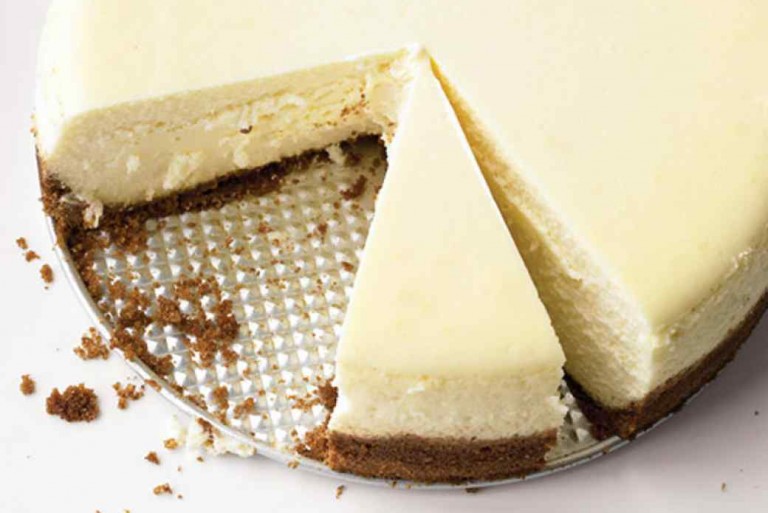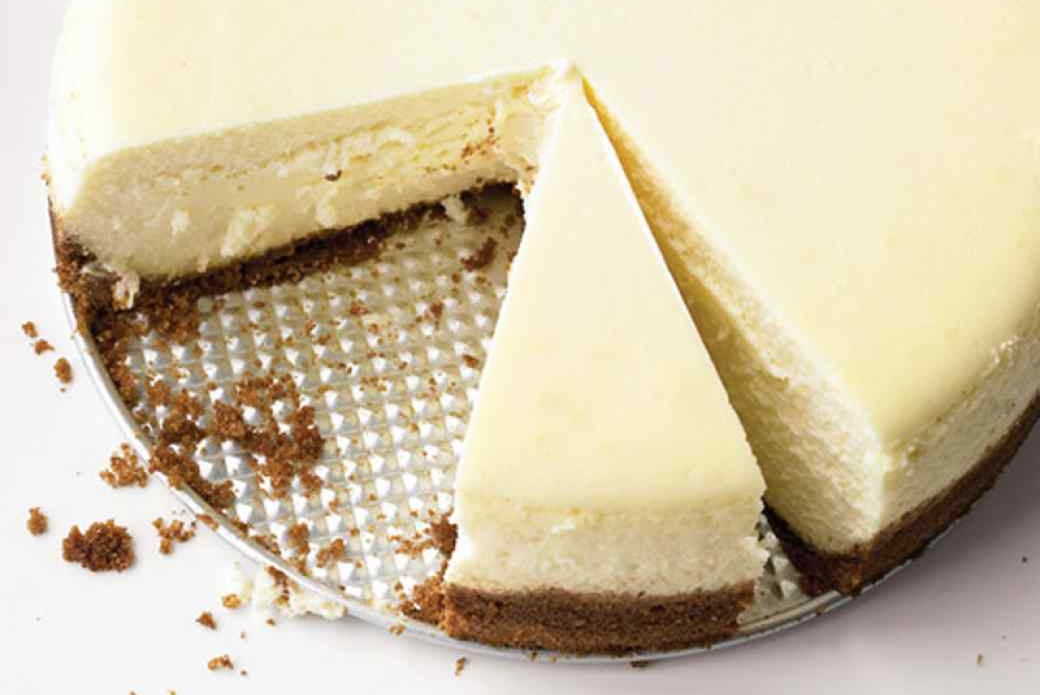When we think of Shavuot, we think of cheese, but how did this tradition begin? I asked Gil Marks, whose fascinating cookbook, “Olive Trees and Honey: A Treasury of Vegetarian Recipes from Jewish Communities Around the World” (Wiley Publishing), won the prestigious James Beard award for best vegetarian cookbook.
 “The use of dairy to celebrate this holiday is not a biblical injunction, nor is it mentioned in the Talmud,” Marks told me. “Shavuot falls when the animals are beginning to be weaned away from the mother, so you have a surplus of milk and therefore cheese, yogurt and dairy products. Once you have a tradition, you will find biblical reasons for it. Even in pagan pre-Christian and post-Christian holidays you will find dairy products becoming traditional because they were so abundant at this time of year.”
“The use of dairy to celebrate this holiday is not a biblical injunction, nor is it mentioned in the Talmud,” Marks told me. “Shavuot falls when the animals are beginning to be weaned away from the mother, so you have a surplus of milk and therefore cheese, yogurt and dairy products. Once you have a tradition, you will find biblical reasons for it. Even in pagan pre-Christian and post-Christian holidays you will find dairy products becoming traditional because they were so abundant at this time of year.”
Marks is a rabbi and historian as well as a chef, and his book offers 300 flavorful vegetarian recipes from Jewish communities around the globe – from Mediterranean mezes (appetizers) to savory pastries to tantalizing pastas and stews – and chronicles the fascinating culinary history of such diverse communities as India, Alsace, Greece and Uzbekistan, offering menus and interesting commentaries about the Jewish holidays and deepening our understanding of their historical context.
We learn, for example, that herdsmen of almost 6,000 years ago stored milk in the waterproof stomachs of animal (the first “bottles”). These ancient people discovered that when the milk separated, it coagulated into curds – the first fresh cheese – which not only tasted good, but lasted longer than milk. (Blintzes would come much later!)
“Remember, for most of history people didn’t drink milk straight,” Marks explained, “because, until pasteurization, it was dangerous unless it came straight from the animal. So fermented forms like yogurt, cheese and butter, which have a longer shelf period, are what people ate. To the Greeks, for example, one of the signs of a barbarian was somebody who drank milk.”
More importantly, Shavuot commemorates the giving of the Torah at Mr. Sinai. “No Jews existed before the giving of the Torah,” Marks said. “Technically speaking, Israelites before then were not Jews. One of the new laws concerned keeping kosher, and since their utensils and any meat products they had produced before were no longer kosher, for the first Shavuot they had to eat dairy products.
“In addition, the tradition exists that while they were at Sinai receiving the Torah, when they came back to camp, their milk had curdled into cheese, so you have a variety of mystical and somewhat biblical reasons that developed for the association with dairy.”
Take blintzes, for example. “When you put two cheese blintzes together on a plate,” Marks observed, “it looks like the two tablets of the law. Somebody says, ‘Hey, it’s the Ten Commandments.’ It’s a beautiful way of taking the mundane and elevating it into something special.”
The only food that is actually connected biblically to the holiday is leavened wheat bread, Marks noted. “There are only two times that leavened bread, leavening of any sort, is allowed in the Temple. One is for the Thanksgiving offering and the other is for Shavuot, when two special loaves of raised wheat bread are brought in and literally raised up. Shavuot marks the end of the barley harvest and beginning of the wheat harvest, so a lot of traditional foods evolved because of what was available. The holidays have both a historical and a nature angle.”
Through the years the tradition developed to decorate both the synagogue and homes with greenery and flowers for Shavuot, Marks said. “This is in recognition of both the harvest as well as the tradition that trees flourished on Mount Sinai. The Sephardim in particular developed the use of roses, nicknaming the holiday the Festival of Roses, so they use rosewater and rose petal preserves with meals.”
The book of Ruth is read in the synagogue at Shavuot, he said, because according to tradition, Ruth was the great-great-grandmother of King David, who was born on Shavuot. “I was born on Shavuot too, by the way,” Marks added, “which makes it one of my favorite holidays!”
Another reason for the emphasis on milk is its purity, so white foods, such as rice and white corn, are eaten in some communities at this time. Romanians, for example, will prepare mamaliga – their beloved cornmeal mush – with white corn meal instead of the usual yellow on Shavuot.
“Milk suggests the purity of the people having received the Torah,” said Marks, “not just having received it, but having accepted it and having agreed to become a holy nation, and so the idea of white fits into the whole theme of the holiday.”
To many, Shavuot is the “cheesecake holiday,” and no observance of the festival would be complete without this luscious dessert. But so many cheesecakes, so little time! How to choose?
I turn to “The Cheesecake Bible” (Robert Rose) by George Geary, with 200 delectable cheesecake recipes, from White Chocolate Crème Brûlée Cheesecake to Carrot Cake Cheesecake – there are 20 chocolate cheesecake recipes alone! – to no-bake and savory varieties, sauces and even cheesecake bars, plus tips and techniques that eliminate the intimidation factor.
After much deliberation I chose Banana Split Cheesecake, made with cream cheese, sour cream and whipped cream topping – three good reasons to celebrate Shavuot!
Judy Bart Kancigor is the author of “Cooking Jewish: 532 Great Recipes from the Rabinowitz Family” and can be found on the web at www.cookingjewish.com.
